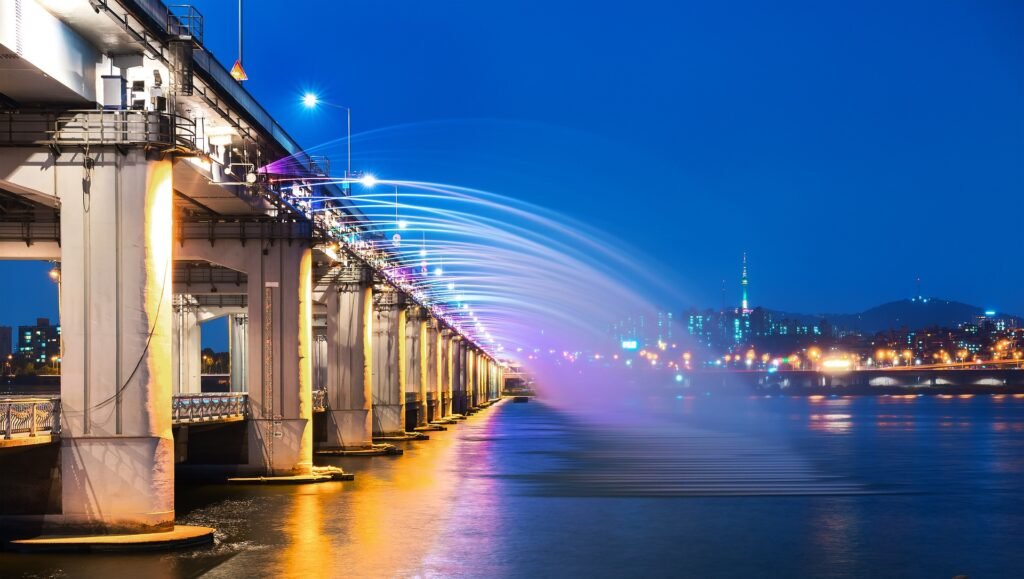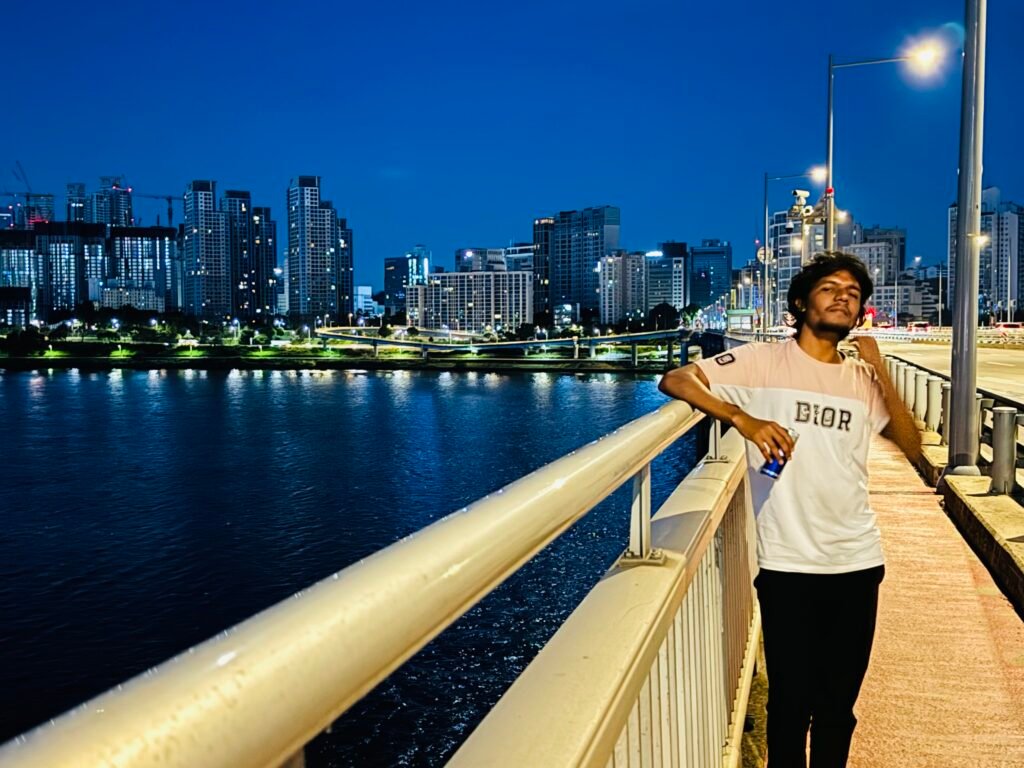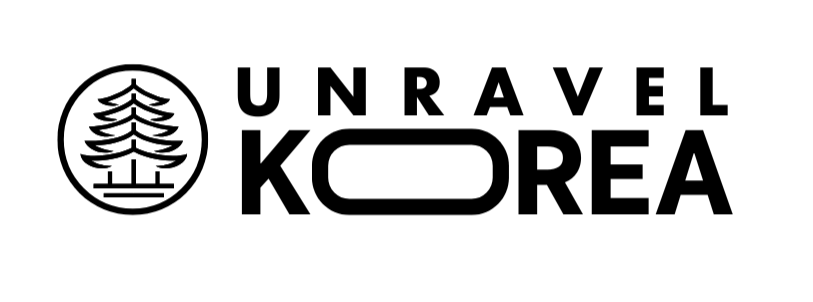During my year living in Seoul, the Han River (한강 in Korean) has become my go-to escape from city life. Whether I need exercise, relaxation, or social time with friends, this iconic waterway offers everything that makes Seoul special.
Let me share why the Han River is so beloved by locals and essential for any Korea visitor.
Where is Han River in Korea?
The Han River flows through the heart of Seoul, dividing the city into Gangbuk (north of the river) and Gangnam (south of the river). Stretching 514 kilometers in total length, it’s not just Seoul’s lifeline but Korea’s most famous river.
The river begins in the Taebaek Mountains and flows westward through Seoul before emptying into the Yellow Sea.
Looking at any Han River map, you’ll see it cuts directly through Seoul’s center, creating the natural boundary that has shaped the city’s development for centuries.
The river is so central to Seoul life that many neighborhoods, bridges, and districts take their names from their relationship to the Han River.
Han River Korea History: The Miracle on the Han River
The “Miracle on the Han River” refers to South Korea’s rapid economic transformation from the 1960s to 1990s. During this period, Korea evolved from one of the world’s poorest countries to a modern industrial powerhouse.
The Han River became the symbol of this transformation as Seoul grew along its banks from a war-torn city to the thriving metropolis I call home today.
Historical Timeline:
- 1950s: Post-Korean War reconstruction began along the river
- 1960s-1980s: Massive industrialization and urban development
- 1980s-1990s: Transformation into the modern recreational waterway
- 2000s-Present: Focus on environmental restoration and public spaces
Living here, I can see evidence of this miracle everywhere – from the gleaming skyscrapers reflected in the water to the world-class infrastructure that makes river activities so accessible.
Why is Han River So Famous? Why is Han River Popular?
Cultural Significance
From my observations, the Han River represents Seoul’s soul. It’s where:
- Families gather for weekend picnics and bonding time
- Young people socialize with friends over chicken and beer
- Office workers decompress after long days in corporate Seoul
- Couples create memories during romantic evening walks
- Fitness enthusiasts maintain healthy lifestyles through cycling and jogging
Economic Symbol
The river symbolizes Korea’s economic success story. The transformation from a war-damaged waterway to this beautiful recreational space mirrors Korea’s national development journey.
Pop Culture Impact
K-dramas frequently feature Han River scenes, making it internationally recognizable. Many foreign visitors come specifically because they’ve seen it in their favorite Korean shows.
Han River Parks: Your Guide to the Best Locations
Banpo Hangang Park

Location: Gangnam side, near Banpo Bridge
Famous For: Rainbow Fountain show and Banpo Bridge sunset views
Best For: Evening entertainment and Instagram photos
This is my personal favorite for showing visitors. The fountain shows run every 20 minutes during peak season, and the bridge lights create magical reflections on the water.
Yeouido Hangang Park
Location: Yeouido island, near National Assembly
Famous For: Cherry blossoms in spring, largest Han River park
Best For: Cycling, large group gatherings, seasonal festivals
Perfect for bike riding with the longest continuous cycling path. During cherry blossom season (April), this becomes Seoul’s most beautiful picnic spot.
Ttukseom Hangang Park
Location: Gangdong-gu, eastern Seoul
Famous For: Water sports, swimming pools, windsurfing
Best For: Summer water activities and adventure sports
Mangwon Hangang Park
Location: Mapo-gu, western Seoul
Famous For: Quieter atmosphere, local neighborhood feel
Best For: Peaceful picnics, avoiding crowds
Jamsil Hangang Park
Location: Songpa-gu, near Lotte World Tower
Famous For: Urban skyline views, accessibility
Best For: Combining with other Jamsil attractions
Top 10 Things to Do at Han River Seoul
1. Visit One of the Beautiful Parks
Each Han River park offers unique characteristics. I recommend starting with Banpo for first-time visitors, then exploring others based on your interests. The parks are free, well-maintained, and offer different perspectives of Seoul’s skyline.
2. Take a Bike Ride
Bike Rental Locations: Available at all major parks
Cost: 3,000-5,000 KRW per hour
Best Route: Yeouido to Banpo (1-hour scenic ride)
The cycling paths stretch over 40 kilometers along both sides of the river. From personal experience, early morning or late afternoon rides offer the best weather and lighting for photos.
3. Enjoy a Dip in the Water
Swimming Areas: Ttukseom and Jamsil parks have designated swimming zones
Season: July-August only
Safety: Designated lifeguard areas only – never swim in unmarked areas
The artificial beaches and swimming pools provide safe water recreation during Seoul’s hot summers.
4. Take a Ferry River Cruise
Operating Routes: Multiple stops between Yeouido and Jamsil
Duration: 40-60 minutes depending on route
Cost: 15,000-20,000 KRW for scenic tours
Best Time: Sunset cruises offer spectacular city views
The ferry provides unique perspectives of Seoul’s architecture and bridges that you can’t get from land.
5. Cross as Many Bridges as You Can

Famous Bridges: Banpo Bridge (with fountain), Wonhyo Bridge (LED displays), Hangang Railway Bridge (trains passing overhead)
Challenge: 31 bridges total span the Han River in Seoul
Photography Tip: Each bridge offers different architectural styles and views
Bridge-hopping has become my favorite way to explore different neighborhoods while enjoying river views.
6. Go Camping
Camping Areas: Designated zones in several parks
Permits: Registration required, some areas first-come-first-served
Equipment: Tent rentals available at major parks
Best Parks: Ttukseom and Yeouido have the best camping facilities
Camping along the Han River provides unique urban outdoor experiences with city skyline views.
7. Take a Walk or Jog
Walking Paths: Continuous paths on both river sides
Distance: Over 80 kilometers of walking/jogging trails
Popular Routes: Yeouido circular path (5.7km), Banpo to Hannam (3.2km)
Best Times: Early morning (6-8 AM) or evening (6-8 PM)
The river paths offer Seoul’s best urban running experience with consistent shade, water fountains, and beautiful scenery.
8. Have a Picnic
Essential Items: Chicken and beer (chimaek), Korean fried chicken, makgeolli
Best Locations: Open grass areas in any park
Shopping: Convenience stores near all park entrances
Cultural Tip: Koreans often picnic on plastic mats directly on grass
Han River picnics are essential Seoul experiences. I’ve spent countless evenings here with friends sharing food and stories.
9. Sail a Boat
Boat Types: Pedal boats, small sailboats, kayaks
Rental Locations: Ttukseom, Jamsil, and Banpo parks
Cost: 10,000-20,000 KRW per hour
Season: April-October for best conditions
Sailing provides peaceful water experiences with unique Seoul skyline perspectives.
10. Take a Water Taxi
Routes: Connect major Han River attractions and neighborhoods
Schedule: Regular service during peak season (April-October)
Cost: Similar to regular Seoul bus fares
Convenience: Avoid traffic while sightseeing along the river
Water taxis offer practical transportation while enjoying river views – perfect for tourists wanting to see multiple areas efficiently
Connecting Han River to Other Seoul Attractions
Namsan Tower Views
From Han River parks, you can see Namsan Tower illuminated at night. The contrast between the peaceful river and iconic tower creates perfect photo opportunities, especially from Banpo or Yeouido parks.
Bukchon Hanok Village
Take subway from Han River park areas to explore traditional Korean architecture in Bukchon. The contrast between modern river recreation and historical neighborhoods showcases Seoul’s diversity.
Itaewon International District
Many Han River parks connect easily to Itaewon via subway or taxi. After river activities, Itaewon offers international dining and nightlife options.
Han River Map: Navigation Tips
Subway Access: Most parks connect to subway lines 2, 5, 7, or 9 Key Stations:
- Banpo: Express Bus Terminal (Lines 3, 7, 9)
- Yeouido: Yeouinaru (Line 5)
- Ttukseom: Ttukseom Resort (Line 7)
Pro Navigation Tip: Download Citymapper or Seoul Subway apps. Han River parks often require 5-10 minute walks from subway stations.

